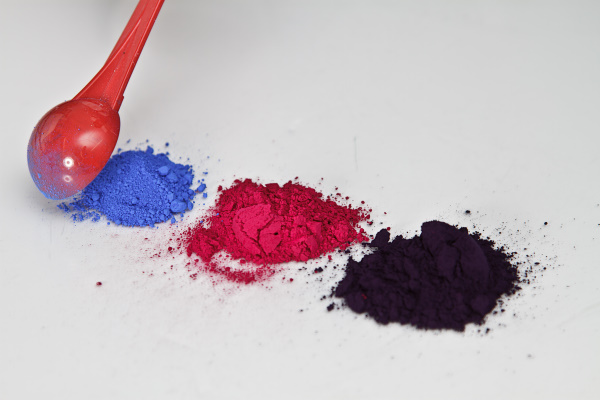 © Marc Volquardsen, 2012
© Marc Volquardsen, 2012
As I have got more and more interested in making pastels by myself I eventually ended up with having a closer look at pigments. First I thought I will write a short summery about it, but oh boy, I can’t recall what made me think that in the first place. It’s tough in German, but even tougher to translate this to English. So I keep it very basic, but I do advise you to do some further readings, because it is so interesting. The links and books suggestions from my side are all in German, but maybe some of my readers do have some recommendations. Please leave it in a comment.
The basis for all painting colors is the pigment. At first it’s only a powder and according to which binder (some kind of glue) you add it turns into oil, acrylics-, watercolor or pastel. Pigments are classified according to their chemical structure into organic and inorganic pigments, which can be natural or synthetic.
Organic:
- natural: Indian Yellow, Indigo
synthetic:Chromgelb, Permanent Yellow, Phtalo-Cyanin- green,
Inorganic:
- natural: mineral earths such as ochre, raw, umber
- synthetic: cadmium yellow, zink oxide
Depending on its particles size, the attributes vary from pigment to pigment. The difference between for example light fastness and consistency may vary a great deal. Forty piles of pigments laid out next to each other may look the same but they certainly aren‹t. Pip Seymour points out that synthetic organic pigments (e.g. Heliogreen) can be difficult to disperse into water and might need wetting agents, such as Disponil or Ox-gall. On the other hand there are some pigments who need more binder to hold the particles together, whereas there are some, which don’t need a binder at all e.g. (Mars Yellow, Raw Sienna)
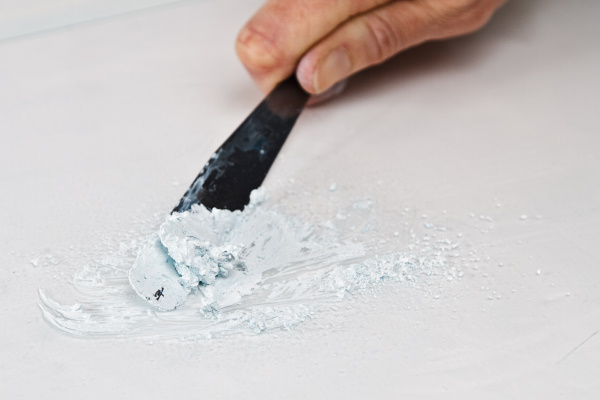
© Marc Volquardsen, 2012
In the first stage after adding water Titanium White feels like chewing gum before it turns into a smooth paste.
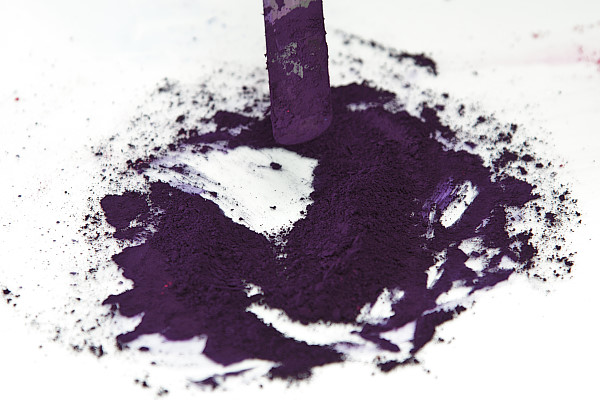
© Marc Volquardsen, 2012
This violett doesn’t disperse water at all.
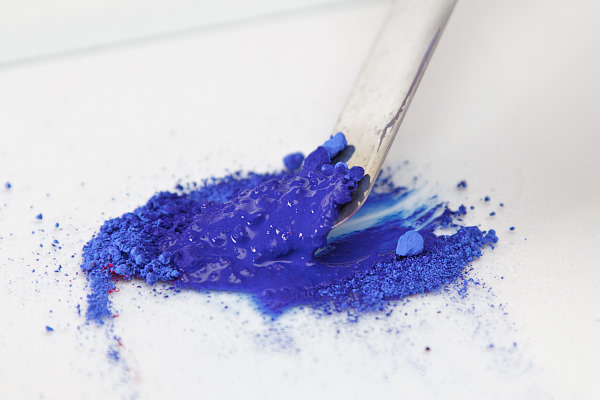
© Marc Volquardsen, 2012
Ultramarin blue easily disperses into water.
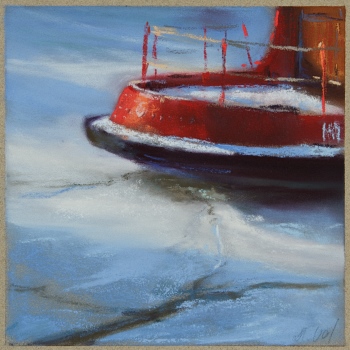 Winterrest (I) – study, 5×5 inch, Pastel
Winterrest (I) – study, 5×5 inch, Pastel

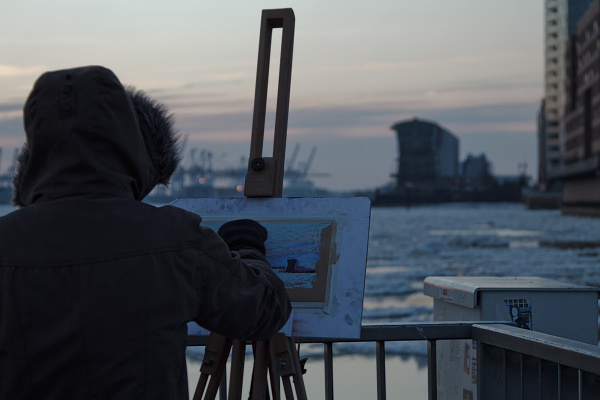
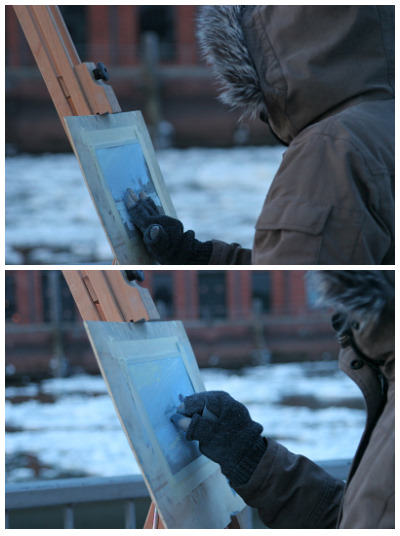 © Marc Volquardsen, 2012
© Marc Volquardsen, 2012 © Marc Volquardsen, 2012
© Marc Volquardsen, 2012


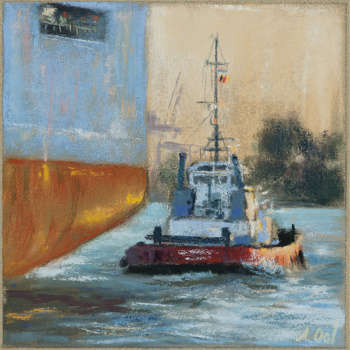 Red Tug (II), 30×30cm, Pastel
Red Tug (II), 30×30cm, Pastel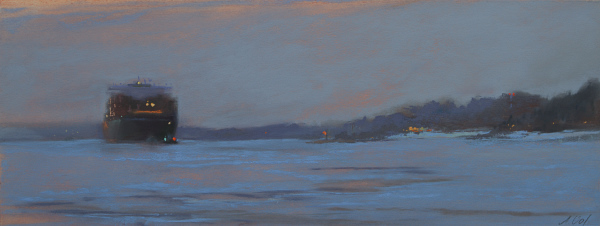
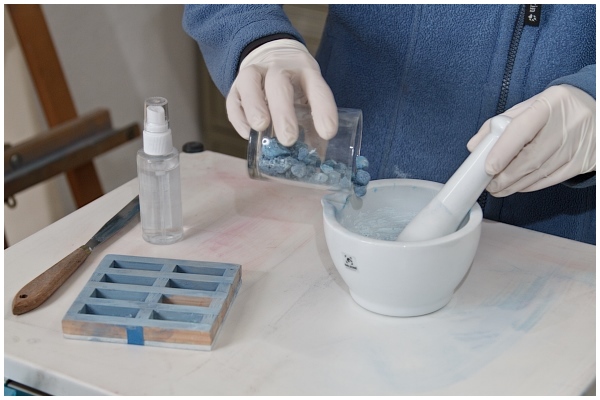
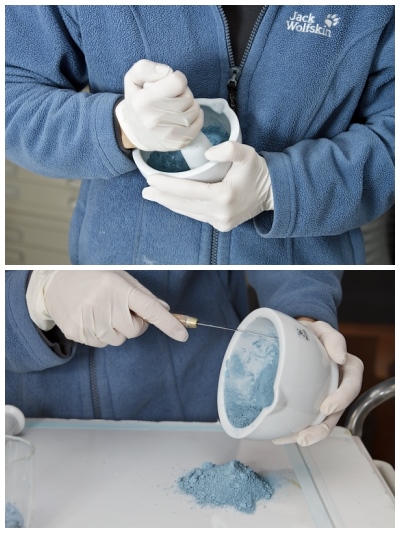
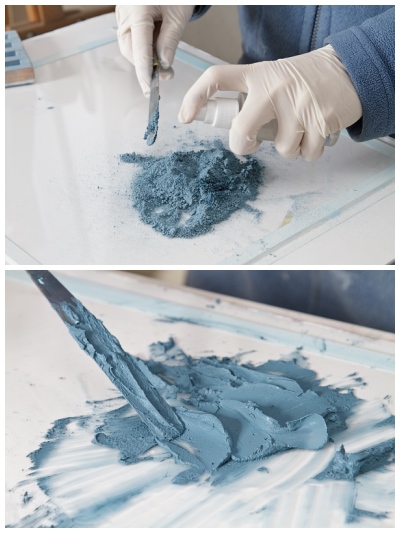
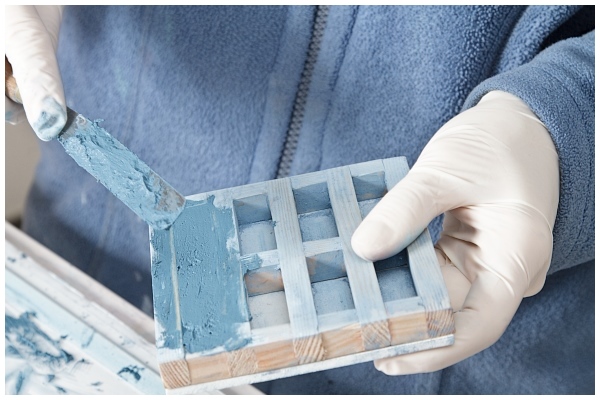
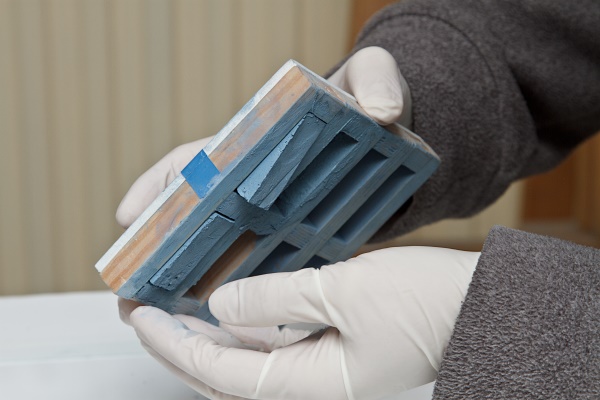
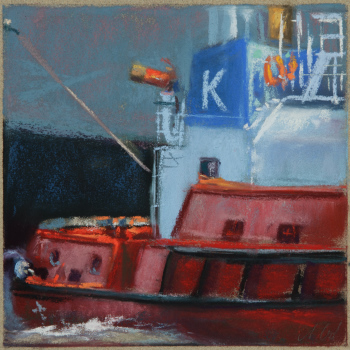 Full speed ahead, 5×5 inch, Pastel
Full speed ahead, 5×5 inch, Pastel